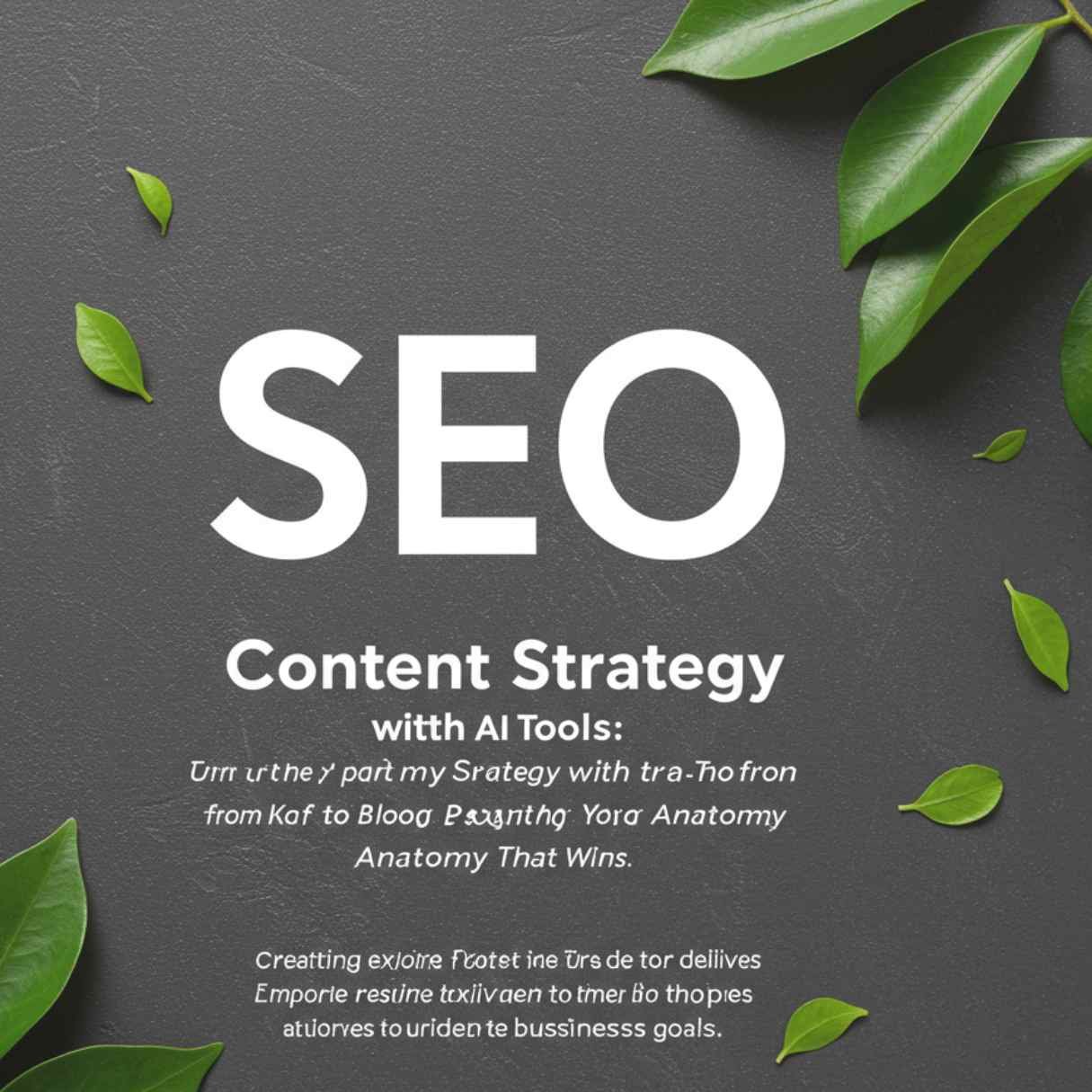Mastering SEO Content Strategy with AI Tools: From Kafkai to Blog Post Anatomy That Wins

In today’s competitive digital landscape, content strategy and SEO have become inseparable partners. From startups to established enterprises, understanding how to leverage AI tools for time management and content creation, like Kafkai, while implementing smart SEO topic clusters and semantic keyword clustering is essential for standing out.
Whether you’re into affiliate marketing B2B, D2C marketing, or running a small business blog, this article will help you integrate the latest AI-powered strategies with proven SEO tactics to maximize organic traffic and conversions.
Why AI-Driven SEO Tools Are Game-Changers
The surge of artificial intelligence marketing tools like Kafkai has revolutionized how marketers approach content generation and keyword research. Kafkai uses machine learning to create human-like articles quickly, helping marketers save time and focus on strategic planning.
When paired with SEO insights, such as analyzing keyword difficulty in SEO with tools like Ahrefs Keyword Explorer, competitor benchmarking like SimilarWeb alternative, or comparing LLaMA vs. Ollama AI models , you can develop a data-driven content pipeline that delivers results.
Building Content Strategy with SEO Topic Clusters and Semantic Keyword Clustering
A modern content strategy relies heavily on organizing information into SEO topic clusters, groups of interlinked pages around a central pillar topic. This method improves site architecture and signals topical authority to search engines.
Using semantic keyword clustering, you group keywords not only by similarity but also by user intent and context, which helps cover a topic comprehensively and improve rankings for related queries.
For more on topic clusters, check out HubSpot’s guide on Topic Clusters.
Automated Competitor Analysis: Stay Ahead in the Game
An essential part of SEO success is continuous research. Automated competitor analysis tools help you identify gaps and opportunities. For instance, leveraging AI-driven tools like SEMrush or SpyFu can provide insights faster and more accurately than manual research.
Anatomy of a Blog Post That Wins SEO
To truly capitalize on your SEO content strategy, understanding how to write blog posts that rank and convert is key.
1. Clear Intent, Clear Purpose
Every successful blog post focuses on one problem or question. For example, a post titled “What is Keyword Research? A Beginner’s Guide” targets beginners looking for clear, actionable info, perfect for satisfying SEO for small business blog readers.
For reference, see Ahrefs’ Beginner’s Guide to Keyword Research.
2. Compelling Headlines That Drive Clicks
Your headline is your first impression. Use numbers, emotional triggers like “ultimate” or “proven,” and include your primary keyword naturally. A headline like “10 AI Tools for Time Management Every Marketer Should Know” is both clear and enticing.
3. Keyword Optimization Without Compromise
Strategically use keywords like content strategy and SEO, affiliate marketing B2B, or artificial intelligence marketing tool in your title, headings, meta descriptions, and throughout the content, without keyword stuffing. Remember to incorporate semantic keyword clustering to broaden relevance.
For tools that help with semantic clustering, check out MarketMuse or Clearscope.
4. Multimedia Integration for Engagement
Boost engagement and dwell time by adding infographics, videos, or charts comparing tools (e.g., Llama vs. Ollama) or showcasing keyword difficulty data. This visual content supports your written points and helps in ranking in image/video searches.
5. Structuring for Readability and Retention
Use H2s and H3s to organize sections like the ones above. Break text into short paragraphs and use bullet points. Highlight key terms like Kafkai AI or similarweb alternative to draw attention.
6. Strategic Calls-to-Action (CTAs)
Guide readers towards your goals, whether it’s signing up for a newsletter on content strategy and SEO, trying out an AI tool, or downloading a free report on keyword difficulty in SEO.
Practical Tips for Using AI Tools in Your SEO Workflow
- Use Kafkai to generate first drafts or brainstorm ideas but always refine content to add your unique expertise.
- Employ competitor analysis tools for automated competitor analysis like SEMrush to stay updated on market changes.
- Test different AI models like LLaMA vs. Ollama to find the best fit for your business needs.
- Integrate affiliate marketing B2B strategies by creating content tailored to business buyers, supported by SEO insights.
- For D2C marketing, focus on building authentic stories enhanced by SEO-optimized blogs.
Final Thoughts: Marrying AI with SEO for Scalable Success
The fusion of AI-powered content tools and traditional SEO best practices unlocks new levels of efficiency and performance. By mastering semantic keyword clustering, using automated competitor analysis, and writing blog posts crafted with a winning SEO anatomy, you can grow your organic reach, build brand authority, and ultimately increase conversions.
Start today by leveraging tools like Kafkai, understanding your keyword difficulty, and structuring content that meets user intent. This holistic approach sets the foundation for a sustainable, future-proof content strategy in 2025 and beyond.